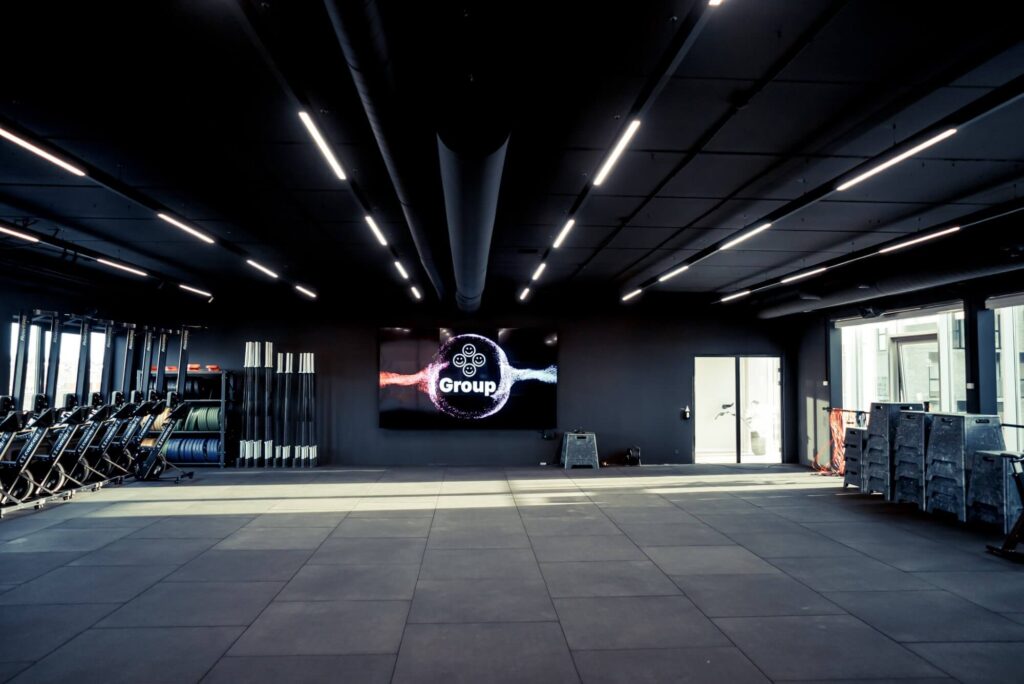
Register your email and get a 65% discount
on Your Next Project
To make the most of your office lighting, we highly recommend that you visit the articles Illuminate your success and Lighting the path to productivity as well. These three articles combined will pave the way for the ideal office lighting, higher productivity, and the best possible work environment.
In the world of lighting, terms like lumens and lux often leave people in the
dark. Understanding the language of illumination is crucial, especially when it comes to office lighting, where productivity and well-being are paramount.
Read along and become more familiar as we unravel the mystery behind
lumens, delve into the world of lux, explore the distinctions between the two, and shed light on why these measurements are critical in optimizing office lighting.

I. What is Lumen?
II. What is Lux?
III. The difference between Lumen and Lux
IV. Why is it important in office lighting
V. An example of Lumen and Lux
A lumen is a unit of measurement that quantifies the total amount of visible light emitted by a light source, as perceived by the human eye. In essence, lumens measure the brightness or luminous flux of a light source, providing
a standardized way to gauge its actual light output. At its core, a lumen (lm) is a straightforward measure of brightness emitted by a light source.
It quantifies the total amount of visible light produced, and in essence, represents the brilliance or luminous flux of the source. As lighting technology has advanced, lumens have emerged as a more accurate way to gauge the actual brightness of a light fixture, surpassing the older method of using watts.
In the past, we often associated the brightness of a bulb with its wattage. Higher wattages equalled brighter light. However, this was not an accurate measure of brightness, especially as energy-efficient lighting options like LEDs emerged. For instance, a 10-watt LED bulb can produce the same amount of light as a 60-watt incandescent bulb, while consuming significantly less energy. Lumens have become the standard for measuring brightness, enabling consumers to make informed choices based on light output rather than energy consumption.

Lux (lx), on the other hand, measures the level of illuminance or the amount of light that falls on a surface per square meter. In essence, it quantifies how bright an object or area appears when illuminated by a light source. Lux is particularly relevant when assessing the quality and effectiveness of lighting for specific tasks or applications.
Lux comes into play when we consider how effectively light is distributed in each space. For example, the lux level in an office workspace is crucial to ensure that employees have adequate and uniform lighting on their desks for tasks such as reading, writing, or working on a computer.
It is an essential metric for architects, interior designers, and lighting
engineers when designing spaces to meet specific lighting requirements.
The key distinction between lumens and lux lies in their focus. Lumens quantify the total light output from a source, while lux measures the light intensity, or the brightness experienced at a particular point or on a surface. Think of lumens as the total light emitted by a lamp, and lux as the amount of light reaching your desk or the pages of a book on your reading table.
To illustrate the difference, consider two different desk lamps with the same lumen output of 500 lumens.
– Lamp A: A narrow and focused beam
– Lamp B: diffuses its light over a wider area.
The lux levels on your desk will be higher under Lamp A, making it more suitable for task-oriented activities. Lamp B, with its lower lux levels, might be better suited for creating ambient lighting in a larger room. When you place this lamp directly over a small desk, it may produce an illuminance of 500 lux on the desk surface. However, if you move the lamp higher to cover a larger area, the illuminance on the desk diminishes as the same 500 lumens are spread over a larger space, resulting in a lower lux value.
In essence, lumens represent the potential, while lux quantifies the actual brightness at a specific location. This means you can have a high lumen output light source, but if it is not directed effectively, the lux level on a task surface can be insufficient.
In the realm of office lighting, it is crucial to strike a balance between lumens and lux.
Lumens ensure the overall space is well-illuminated, while lux guarantees that the necessary brightness is achieved in specific areas for various tasks. By understanding and optimizing both measurements, you can create an environment that is not only energy-efficient but also conducive to productivity and comfort.
While ambient and task office lighting are crucial to your office space, there is another cardinal fixture: the usage of natural lighting. Using the natural light to its fullest extend is an excellent choice for office spaces. It not only saves on energy costs but also provides numerous health and productivity benefits. When planning your office layout, consider positioning workstations near windows to take advantage of natural light.
While ambient lighting, task lighting and natural lighting are the most important factors, you should also keep the following options in mind, when selecting office light fixtures:

In the realm of office lighting, striking the right balance between lumens and lux is paramount. The appropriate luminous flux (in lumens) ensures that your office is well-lit, fostering a productive and comfortable environment for employees.
Achieving the right illuminance levels (in lux) is equally important to ensure that tasks, whether it’s reading documents, working on a computer, or conducting meetings, can be carried out effectively and comfortably.
The proper use of lumens and lux can contribute to human-centric lighting design.
This approach aims to align lighting with the natural circadian rhythms of employees, promoting alertness and well-being during the workday. Lighting that adjusts to the time of day can have a profound impact on mood, concentration, and overall health.
Balancing lumens and lux are not just about comfort and productivity; it is also about energy efficiency. Using the right number of lumens to achieve the desired lux levels can lead to substantial energy savings. Overlit spaces waste energy and contribute to higher utility costs, while underlit spaces can lead to decreased productivity and employee discomfort.
Let us look at a hypothetical example, explaining Lumen and Lux in action. A company, let us call this company XXX Innovations, a large multinational corporation, embarked on a project to overhaul its workspace lighting to enhance productivity and employee comfort.
Recognizing the importance of the interplay between lumens (the total visible light emitted by a
source) and lux (the measure of illuminance or brightness on a surface), they sought to create an
environment that supports various tasks efficiently.
XXX Innovations conducted an extensive evaluation of their workspace, identifying areas where lighting was either insufficient or excessively bright, leading to discomfort and reduced efficiency.
They opted for LED panels that offered a wide range of lumen outputs, allowing for customization of lighting levels throughout different office zones.
To ensure task-specific lighting, adjustable task lights were installed at workstations, providing
employees with the flexibility to tailor lighting to their individual needs, thus optimizing lux levels for various activities such as computer work, reading, and meetings.
By implementing a lighting strategy that balanced lumens for overall brightness and lux for
task-specific illumination, XYZ Innovations was able to create a workspace that not only conserved
energy but also fostered a more productive and comfortable atmosphere for its employees.
This strategic approach led to a noticeable improvement in employee satisfaction, reduced eye strain, and an overall increase in productivity.
In the realm of office lighting, understanding the distinction between lumens and lux is pivotal. Lumens quantify the total light output from a source, while lux measures the illuminance or brightness experienced on a surface.
Striking the right balance between these measurements is key to achieving optimal office lighting. It fosters productivity, well-being, and energy efficiency, making it a crucial consideration in any office lighting design.
By grasping the language of illumination, you can illuminate the path to a more effective and harmonious workspace.
Reach out to us – we’re ready for a conversation to explore customized solutions for you



Unlock the secrets to a leaner greener Office Dive into

Advancements in lighting technology particularly LED bulbs have made it

In the realm of office lighting 4000 Kelvin K lighting
| Cookie | Duration | Description |
|---|---|---|
| cookielawinfo-checkbox-analytics | 11 months | This cookie is set by GDPR Cookie Consent plugin. The cookie is used to store the user consent for the cookies in the category "Analytics". |
| cookielawinfo-checkbox-functional | 11 months | The cookie is set by GDPR cookie consent to record the user consent for the cookies in the category "Functional". |
| cookielawinfo-checkbox-necessary | 11 months | This cookie is set by GDPR Cookie Consent plugin. The cookies is used to store the user consent for the cookies in the category "Necessary". |
| cookielawinfo-checkbox-others | 11 months | This cookie is set by GDPR Cookie Consent plugin. The cookie is used to store the user consent for the cookies in the category "Other. |
| cookielawinfo-checkbox-performance | 11 months | This cookie is set by GDPR Cookie Consent plugin. The cookie is used to store the user consent for the cookies in the category "Performance". |
| viewed_cookie_policy | 11 months | The cookie is set by the GDPR Cookie Consent plugin and is used to store whether or not user has consented to the use of cookies. It does not store any personal data. |
Register your email and get a 65% discount
on Your Next Project
*By registering your email, you are automatically subscribing to our newsletter.